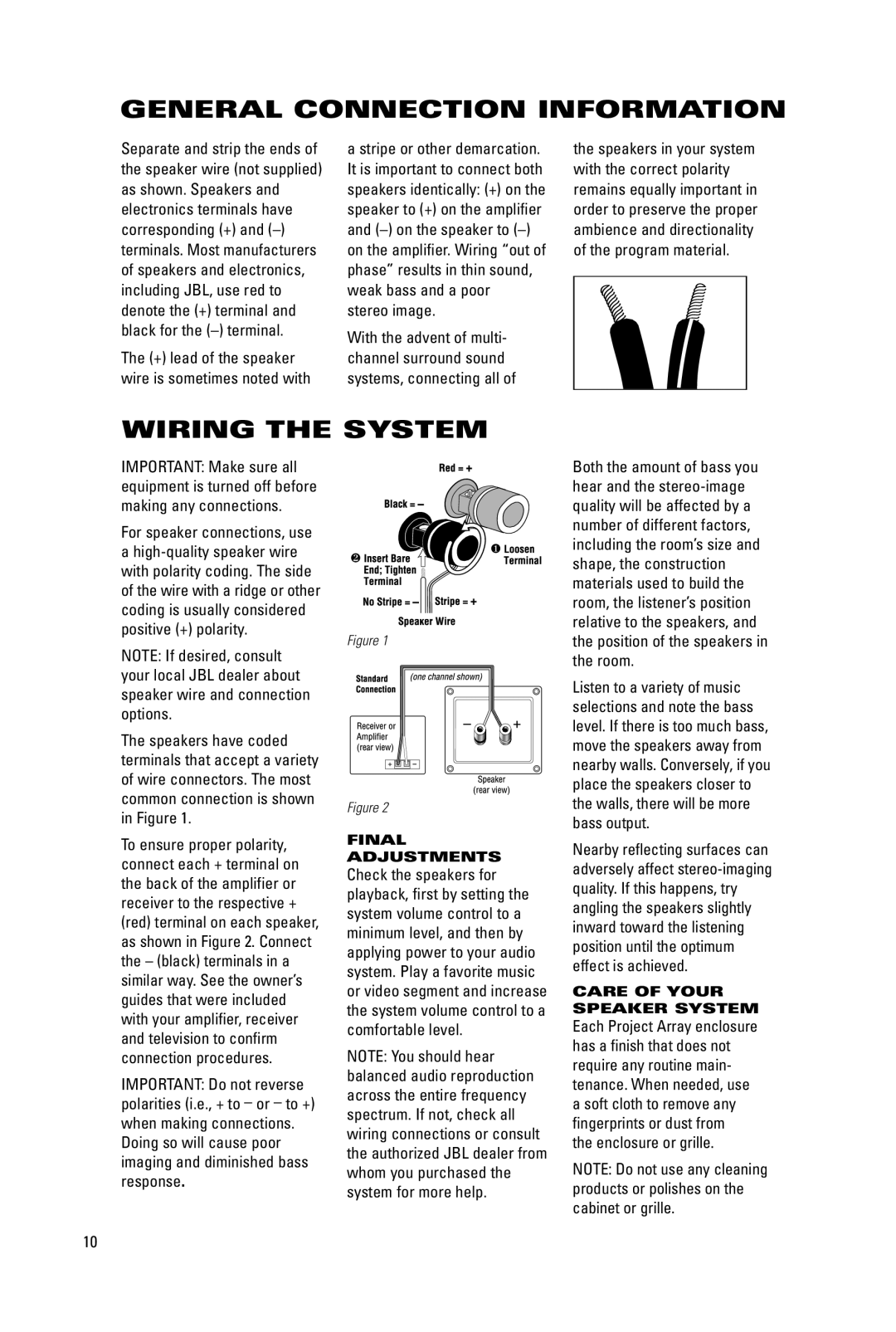880 ARRAY, 1400 ARRAY, 1000 ARRAY, 1500 ARRAY, 800 ARRAY specifications
The JBL ARRAY series encompasses a range of professional loudspeakers designed to deliver exceptional sound quality and performance. These models are perfect for live events, installations, and other applications requiring high-fidelity audio. The series includes the JBL 800 ARRAY, 1500 ARRAY, 1000 ARRAY, 1400 ARRAY, and 880 ARRAY, each distinguished by its unique features and capabilities.The JBL 800 ARRAY is known for its compact design and powerful performance. It utilizes advanced waveguide technology to ensure even sound dispersion, making it ideal for small to medium venues. The integrated high-frequency drivers enhance clarity and detail in vocals and instruments, while the custom low-frequency transducers deliver deep, impactful bass.
Moving up the range, the JBL 1500 ARRAY offers increased power and versatility. This model is engineered for larger spaces, featuring robust amplification and a range of connectivity options. The 1500 ARRAY incorporates JBL’s proprietary D2 ring diaphragm compression drivers, which provide a smooth and extended high-frequency response. The inclusion of a dual-woofer design allows it to handle more demanding audio materials, making it suitable for concert settings.
The JBL 1000 ARRAY is designed for users who require a balance of size, power, and coverage. It features an arrayable design that allows multiple units to be linked together for larger formats. The Model 1000 boasts a strong low-frequency output while maintaining clear mids and highs, making it versatile for a variety of genres. Its rugged construction ensures durability in demanding environments.
Next, the JBL 1400 ARRAY is built for performance in large venues and outdoor settings. Its high-efficiency drivers are optimized for long-throw applications, ensuring consistent sound quality over distance. The advanced digital signal processing (DSP) improves overall audio performance, enabling tailored EQ settings for different environments.
Lastly, the JBL 880 ARRAY delivers remarkable power in a streamlined format. With innovative transducer alignments, this model achieves a wide frequency range and remarkable dynamics. The lightweight design coupled with a high-strength cabinet makes it easy to transport and set up, while its weather-resistant features make it suitable for outdoor events.
In conclusion, the JBL ARRAY series, comprising the 800, 1500, 1000, 1400, and 880 models, offers a broad spectrum of loudspeakers tailored for specific applications. Each model boasts advanced technologies, such as waveguide engineering, high-efficiency drivers, and robust DSP, ensuring exceptional sound quality and reliable performance across various environments.

